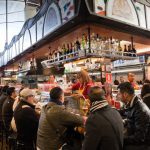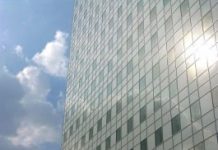Behaviorally Speaking—CM, ALM & DevOps Strategies
by Bob Aiello
Configuration Management (CM), Application lifecycle management (ALM) and DevOps are not easy to implement. In our consulting practice, we develop and implement strategies to support CM, ALM and DevOps in many organizations and the truth is that we are not always satisfied with the results (and sometimes neither is the management who brought us in). We have also been very successful, and largely because we came up with a strategy that made sense for the organization where we were implementing these practices. Coming up the right approach is not always easy and we’ve learned a few lessons along the way that we’d would like to share with you in this article.
What is CM?
The Definition of CM is a topic that has triggered many an enthusiastic debate in the old CM Crossroads forums and groups. (Make sure that you jump in and participate right here by registering for an account!) Traditional CM experts will typically answer that CM is:
Configuration Identification
Status Accounting
Change Control
Configuration Audit
This is certainly true, but it can be very difficult to come up with a strategy to implement these practices in a large multi-platform organization. I have presented my own framework for understanding CM in terms of six core functions that I believe more closely represent the way in which CM is actually practiced on a day-to-day basis. [1]
The six functions are:
Source Code Management
Build Engineering
Environment Management
Change Management
Release Management
Deployment
We have many years of experience implementing each of these six functions in large enterprise-wide environments. The first thing that I always focus on is making CM compelling. You need to start by demonstrating how CM can help your organization (especially your development team) create the software (or what CM gurus call configuration items). Don’t expect everyone to just automatically accept (and believe in) the benefits of good CM. But over time, we have seen many folks come to the conclusion that CM practices make sense. Application Lifecycle Management (ALM) may be a little harder to fully grasp. The key to understanding ALM is to first understand the classic CM function called Status Accounting.
Status Accounting
Status Accounting involves following the evolution of a configuration item throughout its lifecycle. The terminology is a little confusing and you are certainly not accounting in the sense of counting rows of numbers. Instead, you are tracking the status of the configuration items that are being created during the development lifecycle. This sounds great now, but then how do you go about doing status accounting? On a practical basis this is exactly what ALM is all about.
Application Lifecycle Management (ALM)
The ALM is essentially the software or systems lifecycle used to create each of your configuration items. This means that CM is (and always) was a full lifecycle endeavor. So another aspect of your strategy has to be to realize that CM and ALM are focused on the entire lifecycle. So then what exactly makes ALM different than the CM function of Status Accounting? In practice, ALM has a very wide scope from tracking requirements to design, test planning, development, all the way to deployment (and even tracking and retiring configuration items that should no longer be in use). Obviously, CM touches many of the same points as requirements, test cases and design documents all need to be under version control as well. ALM also places a strong focus on tools and tools integration.
ALM Tools
Recently, a colleague of mine chanted the common view that the process is much more important than the tools. I used to believe this, but ALM has taught me that tools do matter a great deal and your strategy needs to include a robust tools selection process (e.g. bake off). ALM’s wide focus[2] means that you need to have the right tools (and process) in place to support every aspect of your software and systems development effort. In practice, this has meant implementing requirements tracking tools with integration to test case management systems. There are two essential reasons for this. The first is that requirements should map to test cases (you want to verify and validate your requirements – don’t you?) and the second reason is that incomplete requirements can be supported by well documented test cases. ALM tools need to focus on integrations to provide a complete and robust full lifecycle solution. One benefit of this approach is enhanced IT Governance and Compliance.
IT Governance and Compliance
IT Governance is all about providing the essential information that management needs to make the right decisions. These practices are an essential ingredient is seeing the management can make the best decisions with the input of information that is accurate and relevant. There are a number of organizations that provide information on implementing IT Governance including ISACA. Your strategy should include using industry standards and frameworks for guidance. This leads directly to Compliance which usually refers to complying with regulatory requirements. CM and ALM are essential for supporting both IT Governance and Compliance.
Agile and Lean for CM/ALM Strategy
One of the best strategies that I have implemented was using Agile and Lean practices to iteratively develop CM & ALM processes. For example, one ALM solution that I implemented recently has a complex workflow automation template that can be tailored to the individual needs of the team and project. There was no viable choice but to approach this effort in an iterative way. So I actually setup a separate project in the tool to track changes to the workflow automation template itself. I used the ALM tool to develop and implement the ALM tool! Make sure that you realize that implementing CM and ALM is an effort that requires industry best practices in alignment with your organization and culture.
DevOps consists of principles and practices that help improve communication and collaboration between teams that all too often have very different goals and objectives. While the principles are consistent across all projects, the practices may indeed vary from one situation to another. Read more about DevOps here.
Conclusion
CM, ALM and DevOps are essential for the success of any software or systems development effort. There are many lessons learned and effective strategies for success. Obviously, there are also risks that need to be addressed. The best strategy that I have found is to use the same principles that work for your development effort to guide and management the implementation of your CM and ALM functions. This is an excellent strategy that will help facilitate your success and the success of all of your efforts. Make sure that you drop me a line and share your strategies for CM, ALM and DevOps!
[1] Aiello, Robert and Leslie Sachs. Configuration Management Best Practices: Practical Methods that Work in the Real World. Addison-Wesley, 2010.
[2] Aiello, Bob and Leslie Sachs. 2016. Agile Application Lifecycle Management: Using DevOps to Drive Process Improvement. Addison-Wesley Professional
















